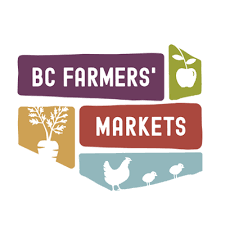Whoops! Seems we made a few errors when we posted this story last week! Specifically, we didn’t tell you the complete picture about what exactly “certified organic” is when it comes to chickens and eggs, and also we mixed up the definitions of free run and free range. This goes to show just how confusing food labelling is – even for us! – and how important it is to get well educated before passing on the info. We’re normally very good at fact checking but this one slipped by us and we apologize for the confusion.
Thanks to Jerry Ellis, Sheila Poznikoff, and Chris Bodnar for the corrections and the points in the right direction. We have four vendors selling eggs at the market: Glen Valley Organic Farm or Forstbauer Farms both offer certified organic eggs. Outwest Ranches offers free range eggs, and Rockweld Farm has free run eggs. Now… back to Allie’s corrected egg post. ~Jen Arbo, Operations Manager
I love eggs. I think they are the perfect addition to any breakfast; or lunch, or dinner for that matter. They are delicious, and you can do so many different things with them. And there are so many different kinds, and contributing factors, that can make an already delicious product even more delicious — and healthier too! Amazing!
Difference between White Eggs and Brown Eggs:
It all boils down to the hen. Certain kinds of hens lay white eggs, and certain kinds lay brown eggs. Brown eggs are not necessarily better for you, but are often more expensive due to the fact that they are less common. Some chickens also lay blue eggs are often referred to as “easter eggers”. Still a chicken egg though – the blue doesn’t really matter.
Yolk Colour:
The colours of yolk do vary — from pale yellow to a dark orangey colour — and this is affected by what the hen is fed. If the hen was fed wheat you’re probably going to have pale yolk, however if the hen was fed corn the yolk will be darker. That being said, generally hens that have been allowed to freely range eat healthier, greener, food. And because of that the nutrients are passed along to the yolk making it a darker colour.
Free Run vs. Free Range:
Free Range chickens are kept in barns or hen houses that enable them to have outside access all the time at the discretion of the farmer. Free Run chickens live similarly, except they don’t have access to the outside. However, they are allowed to walk around while they are kept inside. No cages for either these chickens!
Organic Eggs:
Organic eggs are very similar to Free Range eggs. They have the same living conditions but are only fed organic feed (feed which has been grown naturally without genetically modified organisms). The chickens are often healthier as well, they are not given any antibiotics (except in emergencies) or hormones. There are also organic standards by which the chickens must live by; the flock cannot live cages, and must always have access to the outdoors — there is a standard regarding how big the enclosure must be as well (Certified Organic states that there must be 2323 cm2/ hen). After the egg is laid nothing is done to it, there is not artificial colouring added or vitamins. Canadian Organic standard covers every aspect of the chickens life: how they are fed, how they are transported and handled, where and how they live and their health care. These eggs can be more expensive but you do know exactly what went into the egg and you know exactly how the chicken was handled and lived their life.
Omega-3 Eggs:
Omega-3 Eggs are laid by chickens that are fed a very specific diet of flax seed, canola and linseed. These are all very high in Omega-3 fatty acids, therefore these eggs are higher in Omega-3 then normal eggs. These eggs are healthier for you, but there is no guarantee that the chickens were kept in good conditions.
With files from CBC, www.helpwithcooking.com, Humane Food and Mother Earth News


